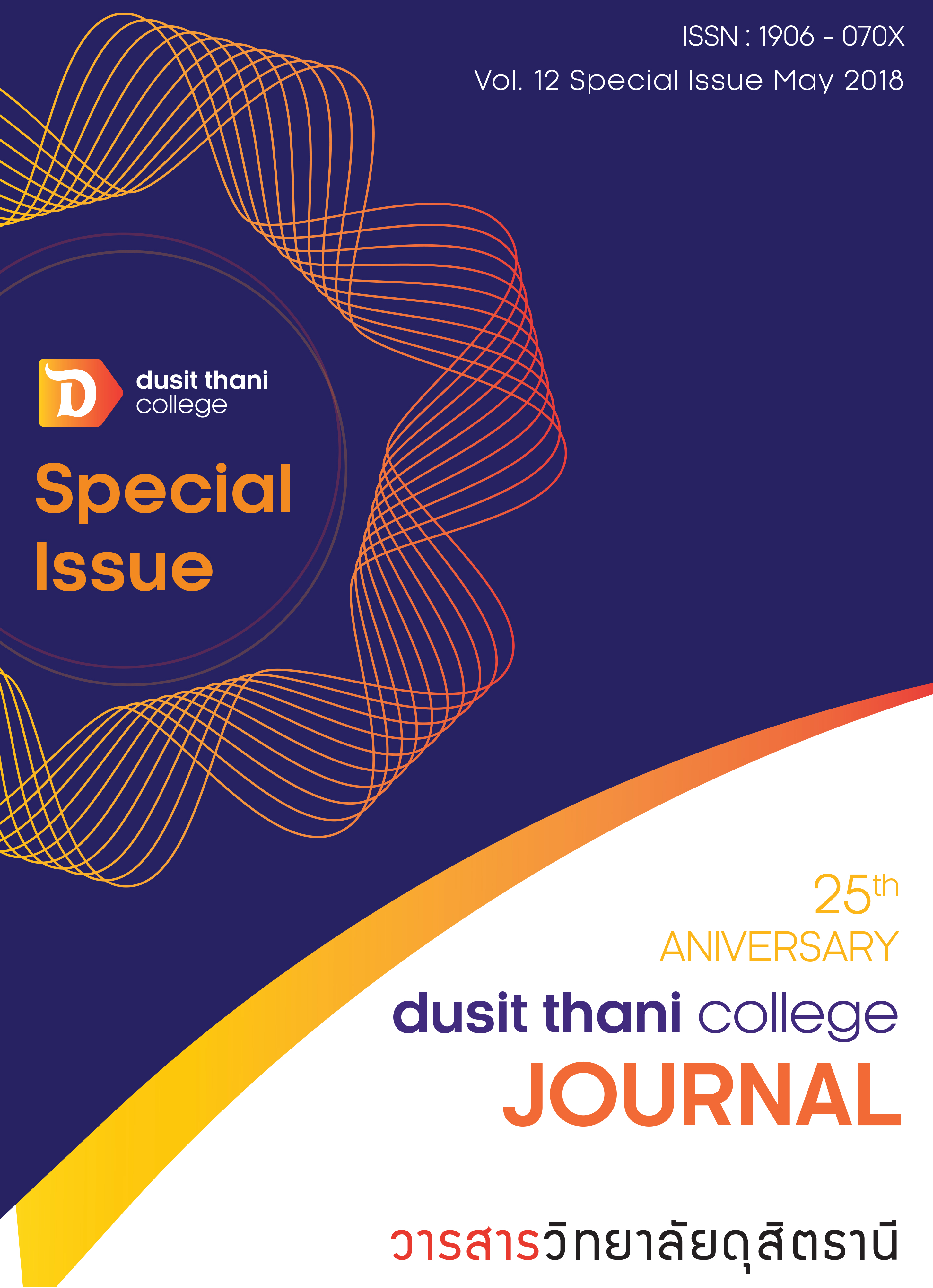A Comparative Study in Gastronomy Tourism Potentiality between Mizusawa Udon, Mizusawa District, Gunma Prefecture, Japan and Khao Soi, Muang Chiangmai District, Chiangmai Province, Thailand
Main Article Content
Abstract
Food tourism is tourism trends that was interested and highly popular nowadays. Foods is a part of the tourism experience that affiliate with local environment and local folk culture.
Udon is a noodle dish which made from wheat flour. In Mizusawa, a small town in Gunma prefecture in the middle of Japan, This small town was inherited an authentic cooking process of Udon for more than 400 years and still inherit the uniqueness of manufacturing process and cooking process until present.
Khao Soi is a noodle dish that combine with Haw Chinese and Lanna people with improving through time. Khao Soi is a popular local food in the northern part of Thailand especially in Chiangmai province, the international famous scenery town in the northern part of Thailand.
Both areas have high gastronomy tourism potentiality but in different context. Mizusawa’s strength is about maintaining the identity of food and Chiangmai’s strength is the international famous destination. Although, both areas have a highly different context but if Chiangmai considering about Mizsusawa’s strength and applied in suitable context of area, social and local culture of Chiangmai it would affect a development of Khao Soi gastronomy tourism in Muang Chiangmai district, Chiangmai province as well.
From a comparative study of the potentiality development for gastronomy tourism for Khao Soi, Muang Chiangmai District, Chiangmai Province. The guideline was analyzed as followed; (1) The identity of Khao Soi should be reserved. (2) Networking the entrepreneurs of Khao Soi to set up a direction and gastronomy tourism planning development. (3) Government should provide food sanitation training and knowledge for entrepreneurs. (4) Promoting the uniqueness of each Khao Soi restaurant. (5) Encouraging entrepreneurs to use local ingredients. And (6) Create gastronomy tourism route of Khao Soi with a local culture connection in Muang Chiangmai District, Chiangmai Province.
Article Details
Article Screening Policy
- All research and academic articles to be published must be considered and screened by three peer reviews in the relevant field / article.
- All articles, texts, illustrations and tables published in the journal are the personal opinions of the authors. Editors don't always have to agree. And no responsibility whatsoever is the sole responsibility of the author.
- The articles to be published must never be published. Where did you first publish? And not in the consideration of other journals If the audit found that there has been a duplicate publication It is the sole responsibility of the author.
- Any article that the reader sees as being plagiarized or impersonated without reference. Or mislead the work of the author Please let the journal editor know it will be your greatest blessing.
References
Boniface, P. (2003). Tasting tourism: travelling for food and drink. Aldershot: Ashgate.
Cohen, E. and Avieli, N. (2004). Food in tourism. Attraction and Impediment. Annals of Tourism Research. Vol. 31 (4) Oct 2004: 755-778.
Designated Areas for Sustainable Tourism Administration (Public Organization). (2016). Gastronomy Tourism. Available at: https://tis.dasta.or.th/dastatravel/wp-content/uploads/2017/06/2-Gastronomy-Tourism.pdf [8 November 2017].
Du Rand, G. E. and Heath, E. (2006). Towards a framework for food tourism as an element of destination marketing. Current Issues in Tourism. 9(3): 206-234.
Gassinee, Trakoontivakorn and et al. (2014). Thai tourism promotion through image of Northern culinary. Complete Research Report. The office of the National Research Council of Thailand.
Hall, M. and Mitchell, R. (2005). Gastronomic tourism: comparing food and wine tourism experiences, İcinde M. Novelli (Editor), Niche Tourism, Contemporary Issues, Trends and Cases, pp. 89-100.
Hall, C. M. (2003). Wine, food and tourism marketing. The Haworth Hospitality Press:
New York.
Japan National Tourism Organization. (2014). Mitsusawa Udon. Available at: https://japan-brand.jnto.go.jp/foods/noodles/3305/ [20 January 2018]
Kaspar, M. (1986). The impact of catering and cuisine upon tourism. In 36th AIEST Congress: The impact of Catering and Cuisine upon Tourism. Montreux, Switzerland: AIEST
Kim, S. and Iwashita, C. (2016). Cooking identity and food tourism: The case of Japanese Udon noodles. Tourism Recreation Research, Vol. 41(1): 89-100
Long, L. M. (2004). Culinary Tourism. Lexington, KY: The University Press of Kentucky.
MacCannell, D. (1999). The tourist: a new theory of the leisure class. Berkeley, CA, and Los. Angeles, CA: University of California Press. pp. 231.
Nataya, Thanaponkeart. (2004). Assessment of Agrotourism Potential in Amphoe Wang Nam Khiao, Changwat Nakhon Ratchasima. Master of Science. Human Settlement Planning Geography, Department of Geography.
National Innovation Agency (Public Organization). (n.d.). Khao Soi. Available at: https://www.nia.or.th/thaidelicious/index.php?page=recipes§ion=khao_soi_en [8 November 2017].
Onanong, Thongmee. (2015). The Cultural of Lanna Food : The Develop to Creative Economy. Journal of fine arts research and applied arts. VOL 2, NO 1: 25-54
Urry, J. (2002). The Tourist Gaze. second edition. London: Sage.
Tourism Authority of Thailand. (2017). Food Will Keep Us Alive. Available at: https://www.etatjournal.com/mobile/index.php/menu-read-tat/menu-2017/menu-12017/281-1212017-food-alive [8 November 2017].
Tasanee, Aromkliang and Suparp, Chatraphorn. (2014). Sustainability of Local Wisdom Transferring on Lanna Food. Kasetsart Journal of Social Sciences. 35: 189-205.
Thai Food Master. (2010). Khao Soi Recipe, Northern Style Curried Noodle Soup with Chicken. Available at https://thaifoodmaster.com/thai_food_recipes-th/thai_curry_recipes-th/9341?lang=th#.WgLBiNWWbct pdf [8 November 2017].
World Tourism Organization. (2012). Global report on food tourism. Available at: https://cf.cdn.unwto.org/sites/all/files/docpdf/amreports4-foodtourism.pdf [8 November 2017].


